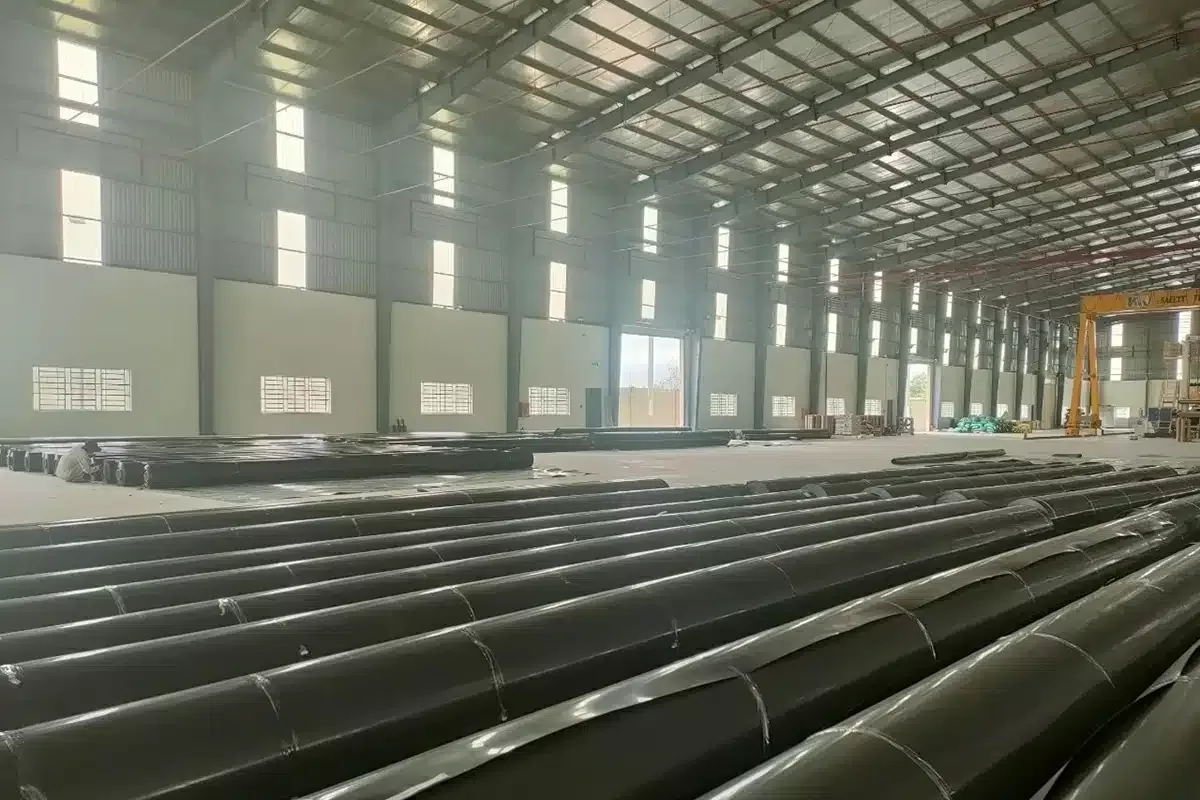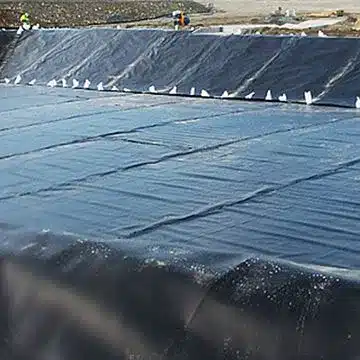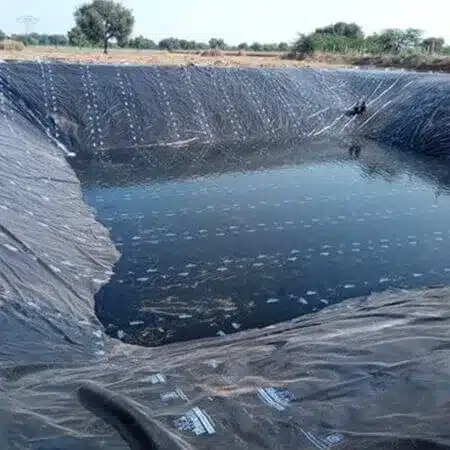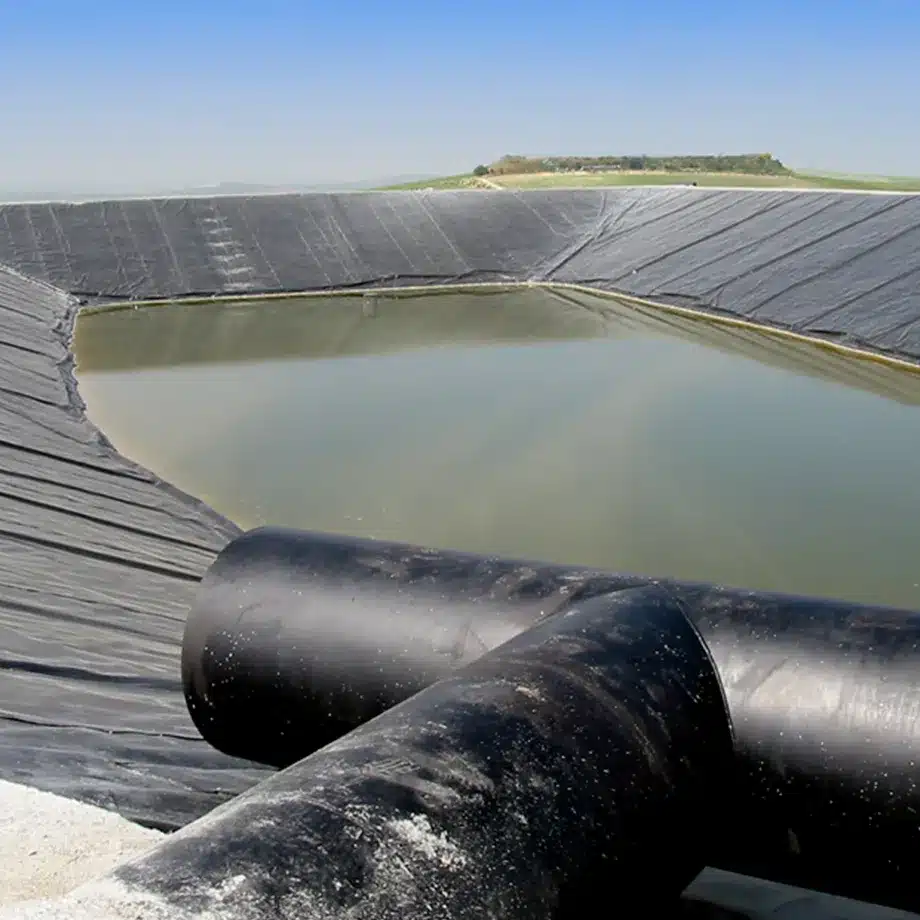+86-159 9860 6917
info@geofantex.com
geofantex@gmail.com
+86-400-8266163-44899
Geomembranes are an essential component in various construction and environmental projects, primarily known for their waterproofing capabilities. These synthetic membranes are used to prevent the migration of fluids and gases, making them indispensable in applications such as landfills, ponds, and building foundations. In this article, we’ll explore the key aspects of geomembranes, focusing on their role as waterproofing underlayment.
Is Geomembrane Waterproof?
Yes, geomembranes are specifically designed to be waterproof, serving as a kind of waterproof barrier material. Made from materials such as high-density polyethylene (HDPE), low-density polyethylene (LDPE), or polyvinyl chloride (PVC), these membranes provide an impermeable barrier to water and other fluids. Their waterproof nature ensures that no seepage occurs, making them ideal for use in water containment systems, landfill liners, and various civil engineering projects where moisture control is critical.

What is the Purpose of a Geomembrane Liner?
The primary purpose of a geomembrane liner is to provide an impermeable barrier that prevents the leakage of liquids and gases. This barrier is crucial in various applications, including the primary and secondary containment of hazardous materials:
- Landfills: Geomembrane liners prevent leachate from contaminating the surrounding soil and groundwater.
- Ponds and Reservoirs: They ensure that water is retained within the structure, preventing seepage.
- Building Foundations: Geomembranes act as waterproofing layers that protect structures from groundwater ingress.
- Mining Operations: They contain hazardous materials, preventing environmental contamination.
By integrating geomembranes for the primary and secondary containment of hazardous materials, these applications ensure safety and environmental protection.
How Do You Seal a Geomembrane?
Sealing a geomembrane involves several steps to ensure a watertight barrier:
- Surface Preparation: The surface where the geomembrane will be installed must be smooth and free of sharp objects to prevent punctures.
- Overlap: When installing geomembranes, overlapping sections by at least 6 inches (15 cm) is essential to create a continuous barrier.
- Welding: The most common method for sealing geomembrane seams is thermal welding. This process involves using hot air or a wedge welder to melt and fuse the overlapping sections together.
- Testing: After welding, the seams are tested for leaks using methods such as air pressure testing or vacuum box testing to ensure integrity.
- Electrophoresis: Another method to seal leaks is to put a voltage across a geomembrane liner so electrophoresis can attract suspended clay particles to leaks, thereby sealing them.
By following these steps, including the innovative use of electrophoresis, a secure and watertight geomembrane barrier can be achieved, ensuring the effectiveness of the installation.
What is the Difference Between Geotextile and Geomembrane?
While both geotextiles and geomembranes are used in civil engineering and environmental projects, they serve different purposes. Geomembrane is a plastic film, and geotextile is a fiber cloth:
- Geotextile: Geotextiles are permeable fabrics made from synthetic or natural fibers. They are used for filtration, separation, reinforcement, and drainage. Geotextiles allow water to pass through while preventing soil erosion and providing structural support.
- Geomembrane: Geomembranes are impermeable barriers made from synthetic materials such as HDPE, LDPE, or PVC. Their primary function is to prevent the migration of fluids and gases, making them ideal for applications requiring waterproofing and containment.
Understanding that geomembrane is a plastic film, and geotextile is a fiber cloth helps clarify their distinct roles and benefits in various projects.
Geomembranes play a crucial role in waterproofing underlayment, providing an impermeable barrier to fluids and gases in various applications. Their waterproof nature, combined with the ability to seal effectively, makes them indispensable in construction, environmental protection, and industrial projects. Understanding the differences between geomembranes and geotextiles, as well as their respective uses, is essential for selecting the right material for your project. Whether you’re looking to contain water, prevent contamination, or protect building foundations, geomembranes offer reliable and efficient solutions.



Get Free Sample
We’ll respond as soon as possible(within 12 hours)






















